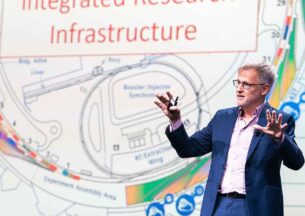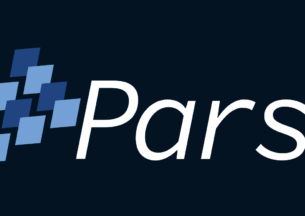Breaking Through to a Greener Cloud, Using Stranded Power
Our growing virtual lives produce a very real carbon footprint. The massive computing and data centers that support our social networks, online shopping and video streaming are a voracious consumer of energy, using over 90 billion kilowatt-hours of electricity each year in the United States — 3 percent of the country’s total energy budget, and growing rapidly.
But researchers from University of Chicago Computer Science have proposed a clever idea that could help the largest cloud and data centers reduce the climate impact of their soaring energy hunger. The Zero-Carbon Cloud — or ZCCloud — developed by William Eckhardt Distinguished Service Professor of Computer Science Andrew Chien and graduate student Fan Yang would use “stranded power,” curtailed and uneconomic energy generated by windmills and solar panels, to power large-scale computing at lower environmental cost.
Incentives and policy in many states have successfully stimulated renewable generation, to the point that power grids regularly find themselves with more energy than they can use. But because energy storage remains difficult and expensive, power from renewable sources is often “stranded,” and kept off the grid. As producers build more wind and solar farms, the amount of this wasted energy grows in states such as California and Texas, Chien said.
“[Power grid operators] look at the waste and say it's only a few percent of the total power in the grid, so the power grid is a pretty efficient system,” said Chien, who is also a senior computer scientist at Argonne National Laboratory and director of the CERES Center for Unstoppable Computing. “But that few percent is a gigantic amount of power in each of the major power grids in the US and around the world.”
Terawatts of power, in fact; enough to power hundreds of data centers the size of those used by Amazon, Google, Facebook, and other internet giants, or to create a distributed network of computing clusters that help defray the demand for time on supercomputers. In fact, Yang and Chien calculated that the stranded power from only 7 generation sites in one particular system — the Midcontinent Independent System Operator (MISO) grid — could enable as much compute as the world’s Top 250 supercomputing systems, combined. While MISO is the United States’ largest power grid, there are five similar grids in the country, and more than 30 worldwide.
The ZCCloud idea proposes to harness at least some of this rapidly-growing stranded power by building data centers at places in the power grid where the most renewable energy is “spilled,” aggregated from multiple sources but unused by downstream customers. Because the flow of renewable energy is intermittent, naturally fluctuating with wind or sunshine, these computing centers wouldn’t be “on” at all times and would only activate when there is stranded power available.
“You're not just getting renewables, what you're doing is taking renewables only when they're in excess on the grid,” Chien said. “You only take power when it's available as opposed to when you want it. It’s a supply-driven view, that’s what makes this whole scheme go.”
The ZCCloud research found that this renewable supply is available roughly 80 percent of the time, enough to make a significant dent in America’s ever-growing computing needs. An initial study by Yang and Chien found that adding intermittently-available ZCCloud resources to the Mira supercomputer at Argonne National Laboratory could reduce the wait time for scientists using the resource by half.
However, Chien thinks that the tech giants rapidly building more hyperscale data centers to meet demand are the likely long-term adopters of this zero-carbon approach. Companies such as Microsoft, Facebook, and Apple already purchase carbon offsets or long-term renewable energy contracts, and have the incentive of consumer opinion to pursue additional “green” initiatives.
“Many current ‘green’ data center solutions, such as on-site solar panels or buying renewable power through long-term contracts, still depend on brown grid power to be continuously available,” Yang said. “ZCCloud is different because it is a dispatchable load for the grid, and can benefit grid stability.”
Adopting the strategy could also have further downstream environmental and economic benefits. Many large computing enterprises phase out their hardware frequently in favor of newer, more energy-efficient models, saving money in the long term but creating more physical waste. Cheaper power could drive longer hardware lifetimes, or even data centers built on “old” technology that became cost-prohibitive to operate.
But for now, the variability of renewable energy poses new computer science challenges that Chien’s group seeks to tackle.
“Data centers were not designed to be turned off even 2 percent of the time, much less 10 percent of the time,” Chien said. “So there's this whole question of how do you actually make the applications work given that you're operating under a fundamentally different resource environment. That's where the computer science research is going on right now, to prove scientifically and then make the case to the industry that it is possible, and that the applications can be productive. New protocols, application architectures, and intelligent prediction and management ideas are needed.”












